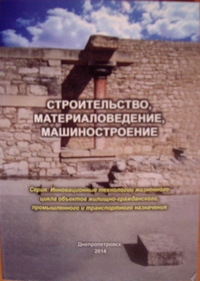Mixing technology for better concrete
Keywords:
Mixer, Intensive Mixer, EIRICH, HPC, UHPC, SCCAbstract
Concrete standards require that concrete must be mixed until the mix appears to be homogeneous. Scientific studies reveal the reasons why: When using conventional mixers, the mixing result deteriorates over a prolonged mixing time. Mixing times must therefore be short. For simple concretes, this is sufficient. Problems frequently arise, however, with fine-grained concretes (such as fair-faced concrete, concrete for roof tiles) and "modern concretes" like self-compacting concrete (SCC), high performance concrete (HPC) and ultra-high performance concrete (UHPC). For these applications, intensive shear mixers have proved to be advantageous. The paper shows, in which ways these advanced version of the simple mixers can be used beneficially. The mixer types described in this paper are based on a history that looks back on experiences with first ring trough mixer in 1903, and planetary mixers since 1906. The basic foundation for the today’s successfully implemented mixing system of intensive shear mixers was laid in 1924. Thanks to a rotating mixing pan design, the material is conveyed to the mixing tools. This implies numerous unique advantages unique and has fostered their use in more than 300 industries – also in the field of concrete. Today the mixers - in sizes from 1 litre up to 3000 litres - are equipped with just one rotating mixing tool; machine sizes up to 12000 liters are available. These mixers produce superior mixing qualities which evidently cannot be achieved in any other mixing system. Based on a number of studies about mixing quality, the paper points out the properties of different mixing systems. This allows the reader to determine when he will benefit from which mixing system.
References
DIN EN 206-1 – Produktionskontrolle, Beton-Kalender 2002, Ergänzungsband, Verlag Ernst & Sohn, Weinheim, S. 233 f
http://www.beton.org/fileadmin/pdfpool/Zementmerkblaetter/B7.pdf (state 30.08.2012)
http://www.bauglossar.com/definition_maschinenmischen (state 30.08.2012)
http://www.bauglossar.com/definition_mischen-beton-mischen (state 30.08.2012)
Ferraris, Ch. F., 2001, „Concrete Mixing Methods and Concrete Mixers: State of the Art” J. Res. Natl. Inst. Stand. Technol. 106 (2001), pp 391 - 399
Beitzel, H., 1980, „Einfluss der Mischdauer auf die Betonmischgüte“, BMT 27 (1980) number 2, pp 77 – 83
Beitzel, H., 1981, „Gesetzmäßigkeiten zur Optimierung von Betonmischern“, part 1, BMT 28 (1981) number 11, pp 586 - 602; part 2: BMT 28 (1981), number 12, pp 641 - 647
Beitzel, H., 1982, „Bedeutung der Mischzeit für Konstruktion und Einsatz von Betonmischern“, BMT 29 (1982) number 5, pp 230 – 234
„Investigations to the mixing performance of mixers for facing concrete”, 2003, report from Institut für Fertigteiltechnik und Fertigbau Weimar e.V. ( Institute for Prefabricated Element Technology and Prefabricated Building in Weimar, Germany), excerpt available from Maschinenfabrik Gustav Eirich, Hardheim, Germany
Rikken, F.2004, “Focus on mixer performance and glass batch quality”, GLASS INTERNATIONAL SEPTEMBER/OCTOBER 2004, pp 76 – 77
Lowke, D. et al., 2005, „Optimierung des Mischablaufs für selbstverdichtende Betone“, beton 12/2005, pp 614 – 617
Orgass, M. und Dehn, F., 2006, „Einfluss der Mischtechnik bei Hochleistungsbetonen“, BFT 1/2006, pp 22 - 28
Dehn, F., Orgass, M. und König, A., 2007, „Einfluss unterschiedlichster Mischparameter auf die Frischbetoneigenschaften von ultrahochfestem Faserbeton“, BWI – BetonWerk International – 5/2007 pp 68 – 77
“Symposium Mix – Control – Record for universities and concrete technologists, the defined mixing process”, BFT 5/2005, pp 68 – 73
Downloads
Issue
Section
License
Редакція Видання категорично засуджує прояви плагіату в статтях та вживає всіх можливих заходів для його недопущення. Плагіат розглядається як форма порушення авторських прав і наукової етики.
При виявлені у статті більш ніж 25% запозиченого тексту без відповідних посилань та використання лапок, стаття кваліфікується як така, що містить плагіат. У цьому випадку стаття більше не розглядається редакцією, а автор отримує перше попередження.
Автори, в статтях яких повторно виявлено плагіат, не зможуть публікуватися в усіх журналах Видавництва ДВНЗ «Придніпровська державна академія будівництва та архітектури».
Автори, які публікуються у цьому журналі, погоджуються з наступними умовами:
- Автори залишають за собою право на авторство своєї роботи та передають журналу право першої публікації цієї роботи на умовах ліцензії Creative Commons Attribution License, котра дозволяє іншим особам вільно розповсюджувати опубліковану роботу з обов'язковим посиланням на авторів оригінальної роботи та першу публікацію роботи у цьому журналі.
- Автори мають право укладати самостійні додаткові угоди щодо неексклюзивного розповсюдження роботи у тому вигляді, в якому вона була опублікована цим журналом (наприклад, розміщувати роботу в електронному сховищі установи або публікувати у складі монографії), за умови збереження посилання на першу публікацію роботи у цьому журналі.
- Політика журналу дозволяє і заохочує розміщення авторами в мережі Інтернет (наприклад, у сховищах установ або на особистих веб-сайтах) рукопису роботи, як до подання цього рукопису до редакції, так і під час його редакційного опрацювання, оскільки це сприяє виникненню продуктивної наукової дискусії та позитивно позначається на оперативності та динаміці цитування опублікованої роботи (див. The Effect of Open Access).

